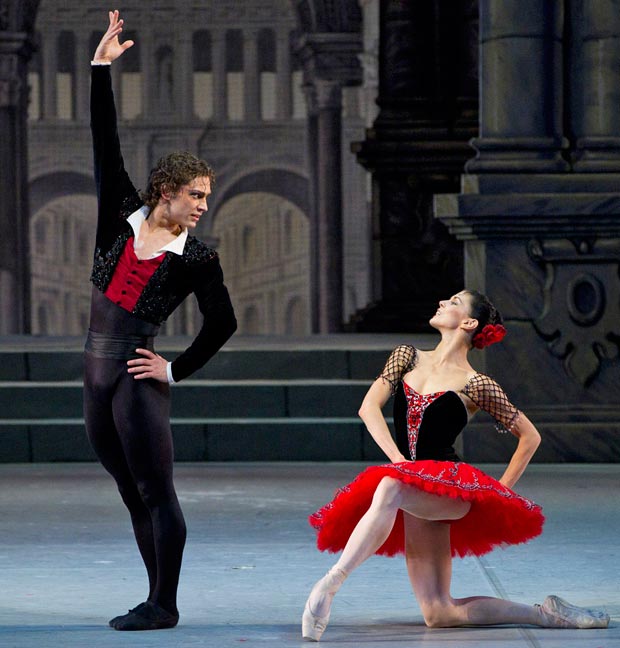
© Stas Levshin, courtesy the Mikhailovsky Ballet. (Click image for larger version)
www.mikhailovsky.ru
lincolncenter.org
Mikhailovsky in NY Season details – 11-23 November 2014
Picture Gallery of Mikhailovsky Ballet in Don Quixote
Having wowed London with three acclaimed seasons over the last six years, at last the Mikhailovsky Ballet make their American debut at the David H. Koch Theater in New York City this November. The St. Petersburg-based company plans to showcase its principals, Natalia Osipova, Ivan Vasiliev and Angelina Vorontsova (all formerly of the Bolshoi Ballet) in Giselle, Don Quixote, and Mikhail Messerer’s much-admired restaging of the Soviet classic, The Flames of Paris. An additional program features three short ballets covering three centuries of Russian dance. The run extends from November 11 through November 23.
The Mikhailovsky Theatre was founded by Czar Nicholas I in 1833. In 1926 the theater fell under official Soviet control as the Leningrad State Academic Maly Opera Theatre, or MALEGOT, and its stage soon after became the home for experimental Soviet ballets and operas. For instance, at the Maly Theatre in 1935, Fyodor Lopukhov premiered Shostakovich’s final ballet, The Bright Stream, with Asaf and Sulamit Messerer, the uncle and mother of the Mikhailovsky’s current Ballet Master in Chief, Mikhail Messerer. Throughout much of the twentieth century the Maly Theatre offered original avant-garde works by the leading Soviet choreographers including Leonid Lavrovsky, Vladimir Ponomaryov, Leonid Jacobson and Yuri Grigorovich. And today the Mikhailovsky Ballet continues to stage more adventurous contemporary programming than the Bolshoi or Mariinsky. However, this tour, sponsored by the Russian Ministry of Culture, highlights the Mikhailovsky’s talented principals, soloists and strong corps de ballet in more traditional works.

© Jack Devant, courtesy the Mikhailovsky Ballet. (Click image for larger version)
Giselle, a perennial favorite with audiences, opens the tour with Osipova and Leonid Sarafanov. Osipova portrays Giselle’s character transformation from a shy, though vivacious peasant girl to a broken-hearted young lady, to a self-composed otherworldly beauty. Her stage-crossing leaps, dramatic intensity and technical virtuosity offer an exciting immediacy to her dancing, and it is no wonder she is one of today’s most sought-after ballerinas, currently serving as principal with the Mikhailovsky and The Royal Ballet, as well as guest principal with American Ballet Theatre. Anastasia Soboleva, first soloist, is rising in the ranks at the Mikhailovsky and will partner principal Victor Lebedev for the matinee on November 12. The third cast for Giselle features the great bravura dancer Vasiliev with Vorontsova, who at the Mikhailovsky is getting the roles that were famously denied to her at the Bolshoi. From YouTube videos Vorontsova’s Giselle seems softer, more naïve and more distant than Osipova’s.
From November 14-16, the Mikhailovsky will present Boris Asafiev’s iconic The Flames of Paris (1932), which ranks with The Red Poppy (1927) as one of the more successful efforts to produce agitprop ballet. Messerer’s celebrated 2013 reconstruction for the Mikhailovsky differs starkly from Ratmansky’s revival (which can be seen on a 2008 DVD by the Bolshoi from Bel Air Classiques with Osipova and Vasiliev as the soloists). Ratmansky’s version captures the spirit of the original, yet he restructures the ballet by adding a love story for an extra couple, dropping what he considered to be ideologically dated, and transferring folk dancing to his soloists. Messerer, however, stays true to Vasily Vaynonen’s original scenario and choreography, which he had performed as a child.
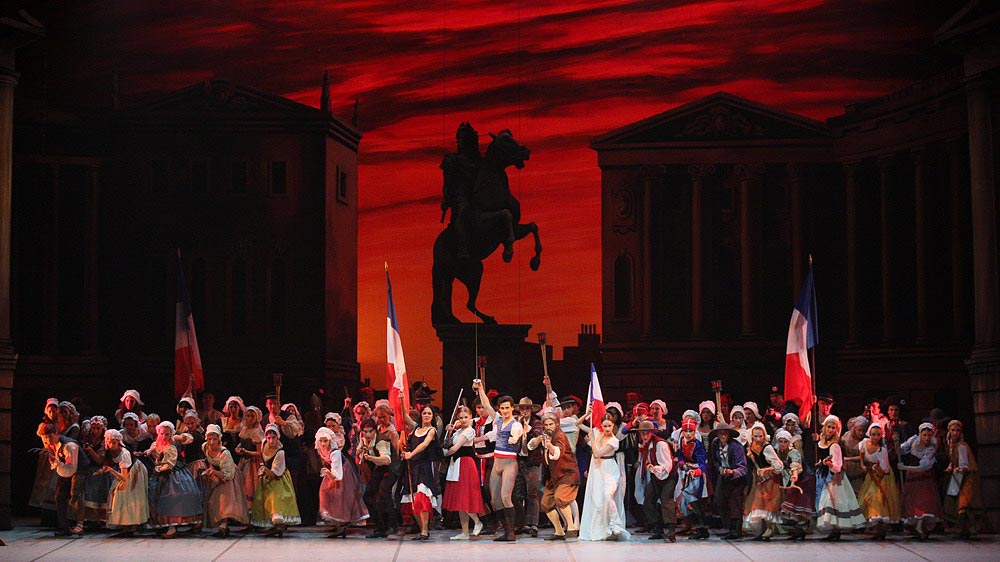
© Stas Levshin, courtesy the Mikhailovsky Ballet. (Click image for larger version)
Set in Paris and Versailles during the French Revolution, The Flames of Paris features flag-waving revolutionaries who perform regional French folk dances to eighteenth-century French airs and revolutionary chants. This ideological crowd-pleaser, supposedly Stalin’s favorite ballet, was clearly a disguised celebration of the Russian Revolution. Though Messerer’s reconstruction of Flames occurred before Ukraine’s Euromaidan Revolution, this story of patriotic fervor, mass crowd protests, and the storming of the Tuileries palace seems particularly contemporary. (Indeed, Flames soloist Oksana Bondareva is Ukrainian). Politics aside, Messerer’s reconstruction recovers an early Soviet classic (and balletic technique) for a new generation of Russian dancers and audiences.
At its core, the Mikhailovsky is a company aspiring to a contemporary profile. When Vladimir Kekhman, Russia’s “Banana King”, took the helm of the theater in 2007 and financially breathed new life into the company, his goal was to “create the image of Russian ballet for the twenty-first century.” In 2009 he hired as Ballet Master in Chief Mikhail Messerer, who has brought his Soviet revivals as well as stagings of Romantic classics to the Mikhailovsky’s repertoire. Then in 2010 Kekhman amazed the ballet world by appointing as Artistic Director Spanish contemporary choreographer Nacho Duato. Though surprising, this move was rather in line with the experimental roots of the company. It proved to be short-lived, however, as earlier this year Duato took over as Artistic Director of Staatsballett Berlin.

© Dave Morgan. (Click image for larger version)
Messerer and the Mikhailovsky’s Musical Director Mikhail Tatarnikov are now molding the artistic direction of the company. Nowhere is this more apparent than in the triple-bill performances “Three Centuries of Russian Ballet” on November 18-19, which sets out what Messerer considers to be the aesthetic trajectory of Russian ballet from Petipa in St. Petersburg in the nineteenth century to Asaf Messerer with the Bolshoi in the twentieth century and now to Nacho Duato, a foreign choreographer in a country that thinks of ballet as its own. The opening work, Petipa’s forgotten one-act masterpiece Le Halte de Cavalerie [The Cavalry Halt], is a clockwork comedy about incompetent cavalrymen seeking amorous adventures among a village’s ballet-dancing peasants. Sprinkled with hilarious situations, this amusing ballet highlights the outstanding dramatic skills of the Mikhailovsky’s dancers.

© Stas Levshin, courtesy the Mikhailovsky Ballet. (Click image for larger version)
Representing the Soviet period in this triple-bill is Class Concert by Asaf Messerer, Mikhail’s uncle. Class Concert was commissioned as a performance exercise for graduates of the Bolshoi Academy in the early 1960s. This ballet, set to the music of several generations of Russian composers including Anatoly Lyadov, Anton Rubinstein, Alexander Glazunov and Dmitri Shostakovich, was incorporated into the Bolshoi’s repertoire in 1963 and danced by Mikhail as well as his cousin Maya Plisetskaya, the Bolshoi’s prima ballerina assoluta. Class Concert’s enactment of a dance class (from fundamental barre exercises to more complicated floor combinations) recalls August Bournonville’s Le Conservatoire (1848) and Harald Lander’s Études (1948) as well as the opening of Serenade (1934), George Balanchine’s legendary first American ballet. Might the Mikhailovsky here be making a subtle reminder of the Russian origins of American ballet?
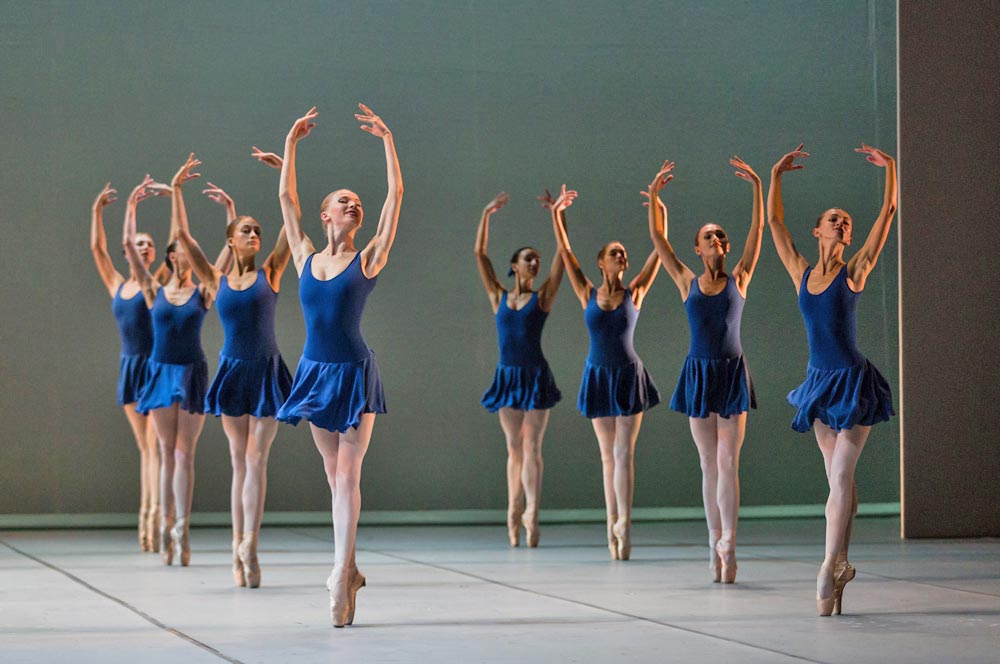
© Stas Levshin, courtesy the Mikhailovsky Ballet. (Click image for larger version)
In carving out a role for the Mikhailovsky between ballet past and present, Class Concert is a curious choice, as it only entered the Mikhailovsky’s repertoire in September 2014. For this American tour the company was originally to perform Shostakovich’s pastiche The Lady and the Hooligan, a prize-winning one-act ballet from 1962, but a last minute issue with the performing rights led to this change. As a result, half the works on the Mikhailovsky’s American tour are stagings or reconstructions by Messerer; no bad thing given his dynastic pedigree and track record.
Nacho Duato’s Prelude (2011) is the only original work on this tour choreographed for the company. In Prelude, thirty-four dancers perform to the music of Handel, Beethoven and Britten. Mikhailovsky Theatre General Director Kekhman’s success in luring Bolshoi dancers Osipova and Vasiliev, as well as many of its younger hires, was partly for the opportunity to learn from Duato a style of contemporary dance absent from the Bolshoi and Mariinsky repertoires. Duato, too, embraced the Mikhailovsky dancers’ classical training, and Prelude purports to synthesize his experiences in Russia in an abstract ballet that mixes costumes, steps, and gestures from both schools of dance.

© Nikolay Krusser, courtesy the Mikhailovsky Ballet. (Click image for larger version)
The Mikhailovsky will end its Lincoln Center season with the brilliant, life-affirming Don Quixote. Osipova and Vasiliev’s partnering on November 20 and 23 is not to be missed. This is the ballet that, on a 2007 Bolshoi tour to London, launched the duo to international fame. Osipova’s Kitri, which became an instant classic, has long inspired comparisons to Plisetskaya’s famous interpretation. Both ballerinas brought to this role incredible athleticism and a fiery dramatic persona. Osipova’s brio is matched by Vasiliev, whose gravity-defying bravura leaps can simply take one’s breath away.
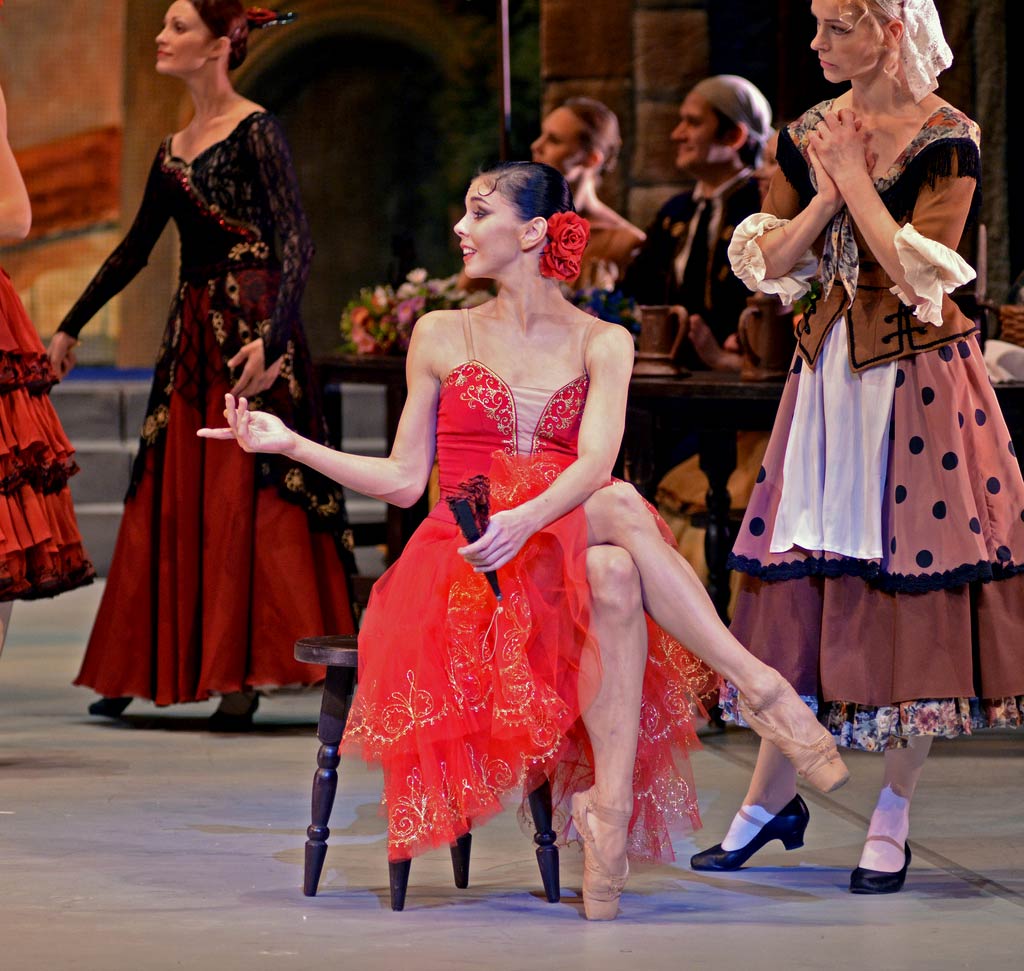
© Dave Morgan. (Click image for larger version)
The Mikhailovsky’s inaugural American tour is a presentation of Russian ballet history by a company once known not for the classics but more avant-garde works. In recent years Messerer and his colleagues have shaped the Mikhailovsky into a company committed to Romantic ballet and classic Soviet revivals as well as contemporary works. This transformation is evident in its tour selections: The Flames of Paris, Class Concert, and Prelude are all new to the company since 2011; it added Giselle to the repertoire only in 2007 and Don Quixote in 1996 (with Messerer’s revised production in 2012). Halte de Cavalerie alone has had a place in the Mikhailovsky’s repertoire since the Soviet period. The Mikhailovsky Ballet is on the rise, and their fresh repertoire and dancing talent make their New York season a must for New York ballet lovers.











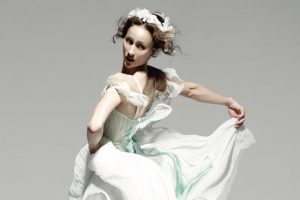
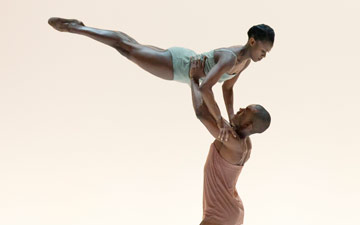



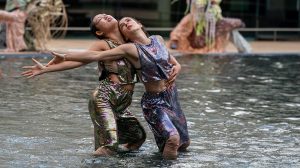
Great news for NY balletomanes. I’ve seen quite many Mikhailovsky performances — and I consider it absolute top class.